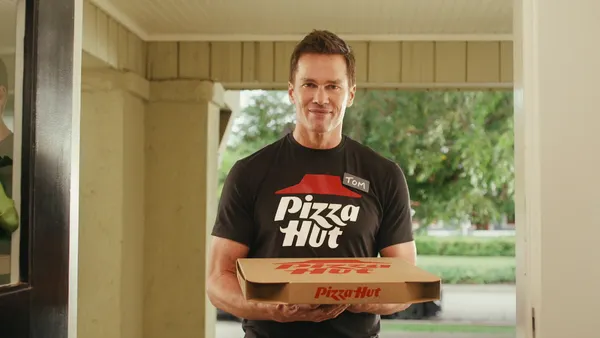Dive Brief:
- P&G issued a press release highlighting its success in digital marketing and delivering shareholder value, among other topics, in response to a 94-page white paper released last week by activist investor Nelson Peltz that took the company's business approach to task on several fronts.
- In the press release, P&G outlined a number of “facts” about its success including that is it “winning in digital and growing share in e-commerce.” Several stats are cited to support the claim, including that P&G grew overall e-commerce sales at around 30% last fiscal year, it grew share in eight out of ten e-commerce categories during the same period and e-commerce sales totaled more than $3 billion —more than P&G’s top two competitors combined. The company also said it is one of the leading advertisers in digital media.
- Peltz’s white paper was released as part of a bid to gain a board seat for P&G’s annual meeting coming up October 10. P&G’s press release pointedly stated: “P&G is on the right track. We’ve done our homework. Don’t let Mr. Peltz derail the progress we are making. Reject Mr. Peltz’s bid to get on your Board.”
Dive Insight:
Given P&G’s quick response to Peltz’s white paper, it seems the activist investor may have hit a nerve at the CPG giant. Companies like P&G that have been around for a long time are looking to transform themselves for the digital era by streamlining their operations so they can address trends and changes in the marketplace at a faster pace while also overhauling their marketing approach to better communicate with digitally-savvy consumers.
The recent back-and-forth with an investor underscores some of the challenges inherent with such a transformation, which can take longer than some might expect. At the same time, P&G and other large-scale business-to-consumer organizations are heading into uncharted territory when it comes to building an organization that is both multi-national, digitally driven and nimble, meaning there is bound to be differing points of view on how best to get the company ready for the future.
The focus on P&G's e-commerce numbers is interesting as it underscores the growing importance of direct-to-consumer sales for consumer packaged goods companies, something that has the potential to make a big impact on the retail and marketing industries.
While P&G is eager to cite its digital successes, it has also notably reduced its digital ad budget recently. Its Q4 earnings release outlined a $140 million drop in digital advertising spending, although the company's organic growth beat analyst’s predictions and the competition, with P&G's sales up 2%. What is so far unclear about the reduction is if it's a strategic move, meaning the company's internal numbers suggest it simply does not need to spend so aggressively in digital. The reduction could also be a temporary move meant to protect the company's brands as digital media experiences some growing pains as evidenced by widespread concern this year about advertisers not having enough control over where their ads are appearing nor the kind of standardized metrics that could enable them to determine the effectiveness of their ads.
P&G placed itself squarely in the debate around digital media supply chains and digital ad transparency when Chief Brand Officer Marc Pritchard called out digital ad platforms including Google and Facebook as well as a number of social media platforms at the Interactive Advertising Bureau’s Annual Leadership Meeting in January, putting those ad partners on notice they would have to adopt Media Rating Council accredited third party measurement by the end of the year or lose P&G digital ad business altogether.










